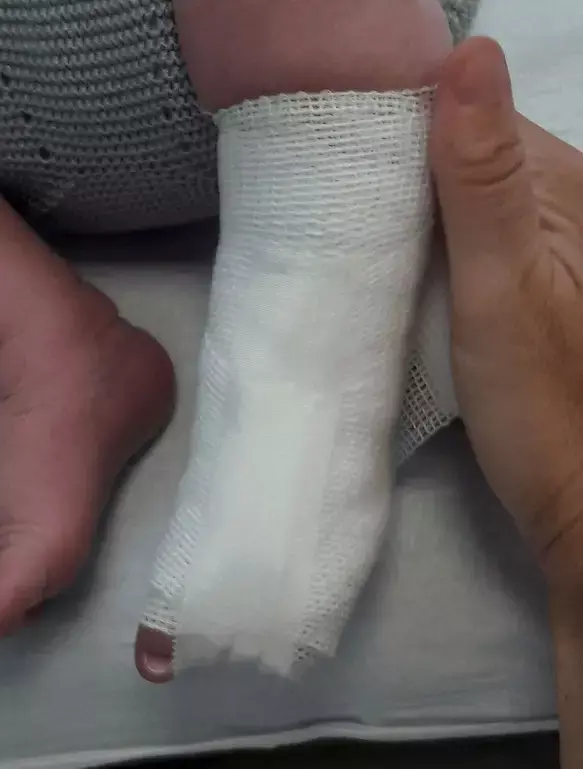- Home
- Medical news & Guidelines
- Anesthesiology
- Cardiology and CTVS
- Critical Care
- Dentistry
- Dermatology
- Diabetes and Endocrinology
- ENT
- Gastroenterology
- Medicine
- Nephrology
- Neurology
- Obstretics-Gynaecology
- Oncology
- Ophthalmology
- Orthopaedics
- Pediatrics-Neonatology
- Psychiatry
- Pulmonology
- Radiology
- Surgery
- Urology
- Laboratory Medicine
- Diet
- Nursing
- Paramedical
- Physiotherapy
- Health news
- Fact Check
- Bone Health Fact Check
- Brain Health Fact Check
- Cancer Related Fact Check
- Child Care Fact Check
- Dental and oral health fact check
- Diabetes and metabolic health fact check
- Diet and Nutrition Fact Check
- Eye and ENT Care Fact Check
- Fitness fact check
- Gut health fact check
- Heart health fact check
- Kidney health fact check
- Medical education fact check
- Men's health fact check
- Respiratory fact check
- Skin and hair care fact check
- Vaccine and Immunization fact check
- Women's health fact check
- AYUSH
- State News
- Andaman and Nicobar Islands
- Andhra Pradesh
- Arunachal Pradesh
- Assam
- Bihar
- Chandigarh
- Chattisgarh
- Dadra and Nagar Haveli
- Daman and Diu
- Delhi
- Goa
- Gujarat
- Haryana
- Himachal Pradesh
- Jammu & Kashmir
- Jharkhand
- Karnataka
- Kerala
- Ladakh
- Lakshadweep
- Madhya Pradesh
- Maharashtra
- Manipur
- Meghalaya
- Mizoram
- Nagaland
- Odisha
- Puducherry
- Punjab
- Rajasthan
- Sikkim
- Tamil Nadu
- Telangana
- Tripura
- Uttar Pradesh
- Uttrakhand
- West Bengal
- Medical Education
- Industry
Early start of Corrective bandages and daily manipulations effective for treating congenital vertical talus

Elia Utrilla Rodríguez et al conducted a study to analyze the results of a conservative method for treating congenital vertical talus in children with early start and to know in which cases surgical treatment was needed.
CVT treatment is commonly surgical and involves extensive soft tissue releases to allow restoration of the normal anatomical relationships between the bones of the foot. Extensive open surgical procedures are associated with a high rate of complications. The development of effective conservative therapeutic procedures has allowed improved correction and lower rates of surgical intervention, avoiding or reducing the potential long-term complications of surgical treatment.
A retrospective analysis of all children diagnosed with idiopathic vertical talus was carried out during the years 2008–2021. Thirty-two children (46 feet) were finally included.
Children were treated with serial manipulations, muscle stimulation, and corrective bandages. Once clinical correction was achieved, a foot and ankle orthosis (AFO) was applied at night for one year.
Age at the time of initiation of treatment, duration of treatment, and correction or not of the deformity without surgical intervention was recorded as variables of interest. The talocalcaneal angle, TAMBA, and ankle range of motion were measured before treatment, after treatment, and at the end of the follow-up period. Statistics decision tree was used to determine which variable best discriminated whether the patient needed surgery. To complement the tree diagram, a two-step cluster analysis was carried out.
Key findings of the study were:
• After treatment, TAMBA and talocalcaneal angle changed from “vertical” to “oblique” category in 45 and 37 feet, respectively.
• The pathological dorsal flexion of the ankle changed to normal in 37 feet and ankle plantar flexion was normal in 46 feet. These variables showed significant changes between the three measurement moments.
• The results of the statistics decision tree and cluster analysis indicate that “No surgery” was associated with an age equal to or lower than one week when treatment was started and with an ankle plantar flexion range of motion lower than 36°.
The authors concluded that – “In summary, the proposed treatment method consisting of daily manipulation and corrective bandages for CVT in newborns avoid surgery in 23 patients (32 feet). Starting this conservative treatment within the first week of life and having a plantar flexion of the ankle lower than 36° were related to the success of the treatment. Knowing these two variables could help determine the need for future surgical treatment.”
Further reading:
Corrective bandages and daily manipulations for treatment of congenital vertical talus: a thirteen year follow up., Elia Utrilla Rodríguez, Nieves Díaz Ávila et al, International Orthopaedics (2023) 47:1101–1108 https://doi.org/10.1007/s00264-022-05685-7
MBBS, Dip. Ortho, DNB ortho, MNAMS
Dr Supreeth D R (MBBS, Dip. Ortho, DNB ortho, MNAMS) is a practicing orthopedician with interest in medical research and publishing articles. He completed MBBS from mysore medical college, dip ortho from Trivandrum medical college and sec. DNB from Manipal Hospital, Bengaluru. He has expirence of 7years in the field of orthopedics. He has presented scientific papers & posters in various state, national and international conferences. His interest in writing articles lead the way to join medical dialogues. He can be contacted at editorial@medicaldialogues.in.
Dr Kamal Kant Kohli-MBBS, DTCD- a chest specialist with more than 30 years of practice and a flair for writing clinical articles, Dr Kamal Kant Kohli joined Medical Dialogues as a Chief Editor of Medical News. Besides writing articles, as an editor, he proofreads and verifies all the medical content published on Medical Dialogues including those coming from journals, studies,medical conferences,guidelines etc. Email: drkohli@medicaldialogues.in. Contact no. 011-43720751


